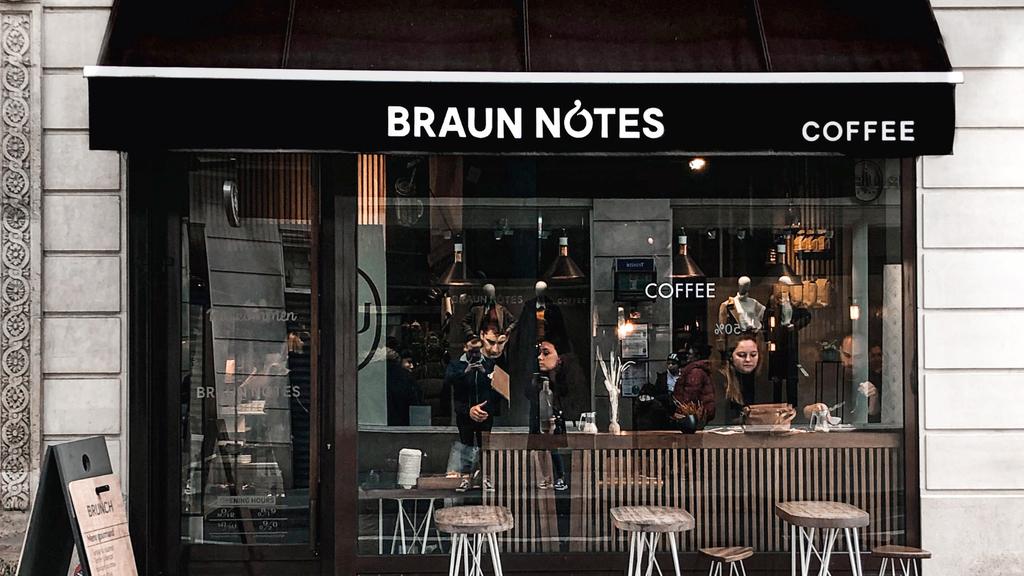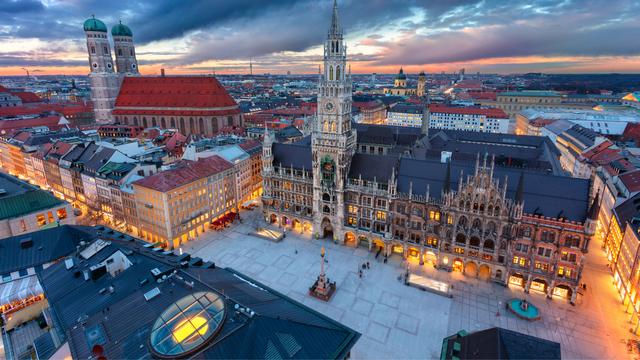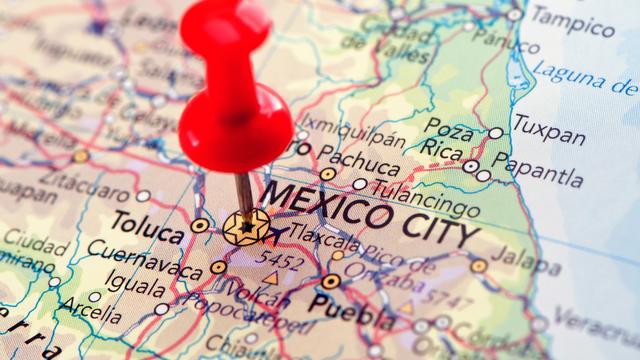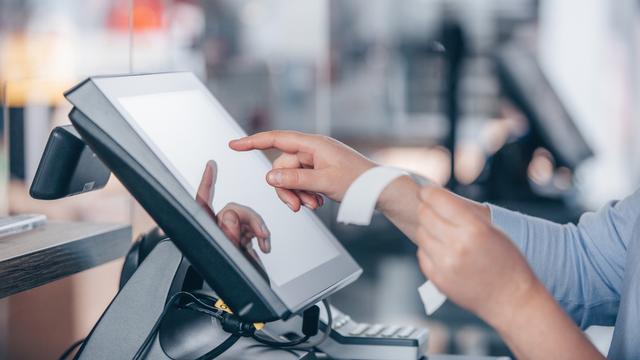Do you want to open a coffee shop? Opening a coffee shop is a good idea for people who want to get into the service and restaurant industry with fewer difficulties. Even though very similar to restaurants, coffee shops are easier to manage in many ways, and can be the first step towards having a successful food business. In this article, I’ll guide you through opening a coffee shop while also sharing some insights that will be useful to first-time entrepreneurs. Let’s begin!
Before Getting Started, Do Some Research
Even though coffee shops are a simpler business model when compared to restaurants, make no mistake, they’re still a demanding and complex business. That’s because there are numerous types of coffee-based drinks, preparation methods stemming from different cultures, coffee beans, and more. That’s why studying coffee itself is a good idea before opening a coffee shop. There are also different types of drinks you can offer as alternatives to coffee – popular ones like yerba mate or matcha tea are a staple. And you can also offer food or desserts, which can help you stand out from competitors. Once you have something more clear in mind, you can start with the first step.
1. Write a Business Plan For Your Coffee Shop
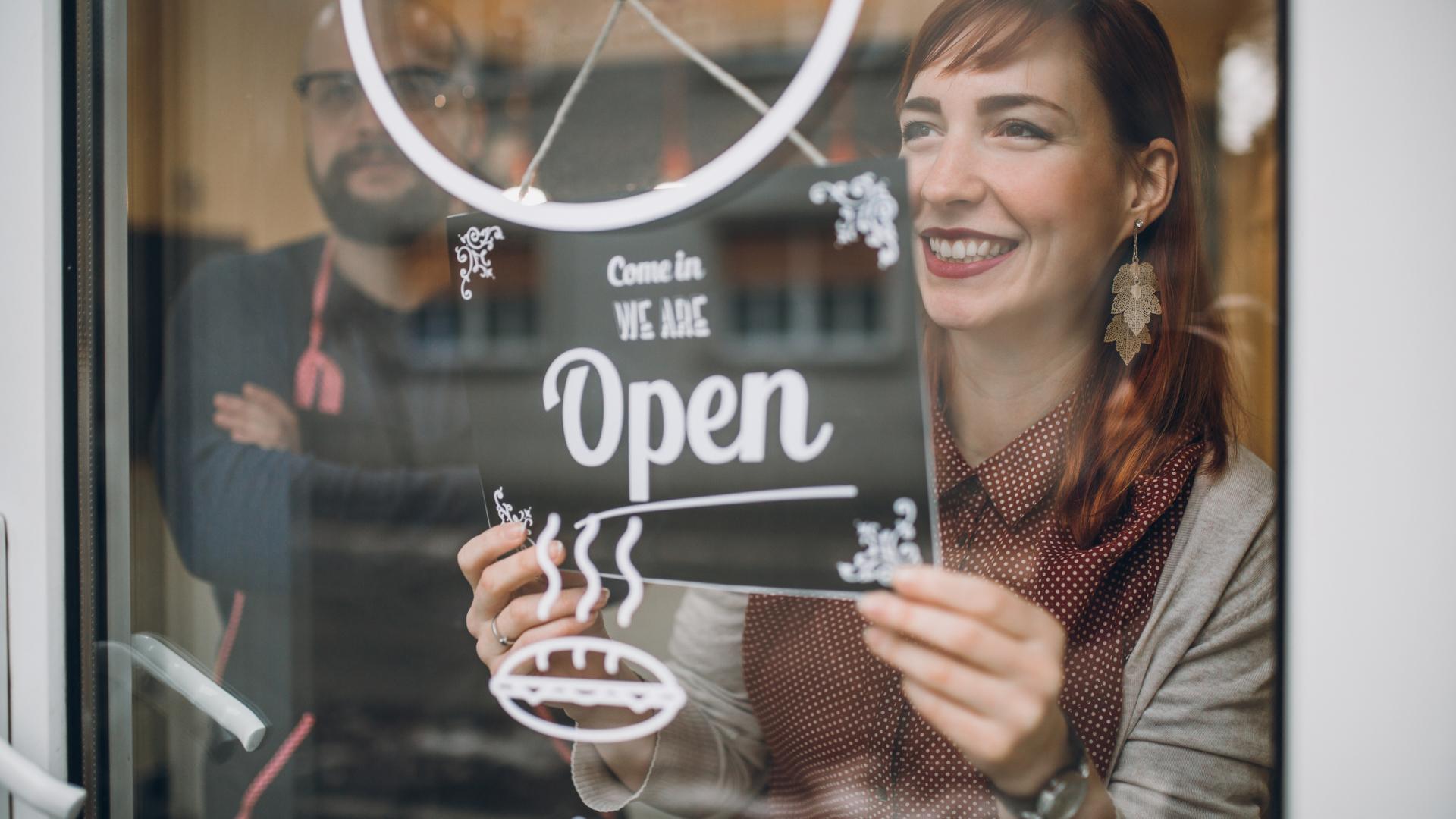
The first step is organizing your project into a business plan – it will make the rest of the process much easier for you. The business plan is a document that details the different aspects of your business. Here’s what you must include:
- Market analysis.
- Executive summary.
- Description of the concept.
- Menu and description of every preparation.
- Organization charts and processes.
- And more.
The most important aspect of a business plan is the market analysis – it’s what will tell you the first hints of the business being successful. You will also require this document if you want to find investors, loans, or associates to open the business. A good executive summary will attract and convince potential investors to help you complete your project. Keep in mind that the business plan is subject to change throughout the process of opening your business.
2. Develop a Concept That Resonates With Your Future Customers

Once you have an in-depth understanding of your future customers, you must create a concept that attracts them to your business. The concept is the theme of your coffee shop and it’s a vital part of what makes it appealing to your customers. It affects every aspect of your business, such as the menu, the service type, the decoration and lighting, and much more. Creating a concept that doesn’t have a matching customer base is a costly mistake, so making sure you create a viable concept for your area is crucial. I’ll give you an example.
Coffee Shop Concept Example
A coffee shop that prepares and serves caffeinated drinks from around the world. It offers coffee as it is prepared in different countries as well as other alternatives like different types of tea. It also pairs each type of drink with common breakfast preparations and simple meals. The decoration consists of a well-lit and colorful space with seats, decorative flags from different countries, and different music genres playing throughout the day. The staff is multicultural and speaks several languages as well. This coffee shop is highly appealing to customers from the city it is located in because there are numerous immigrants and tourists!
3. Hire a Coffee Expert and Develop a Menu That Matches Your Concept
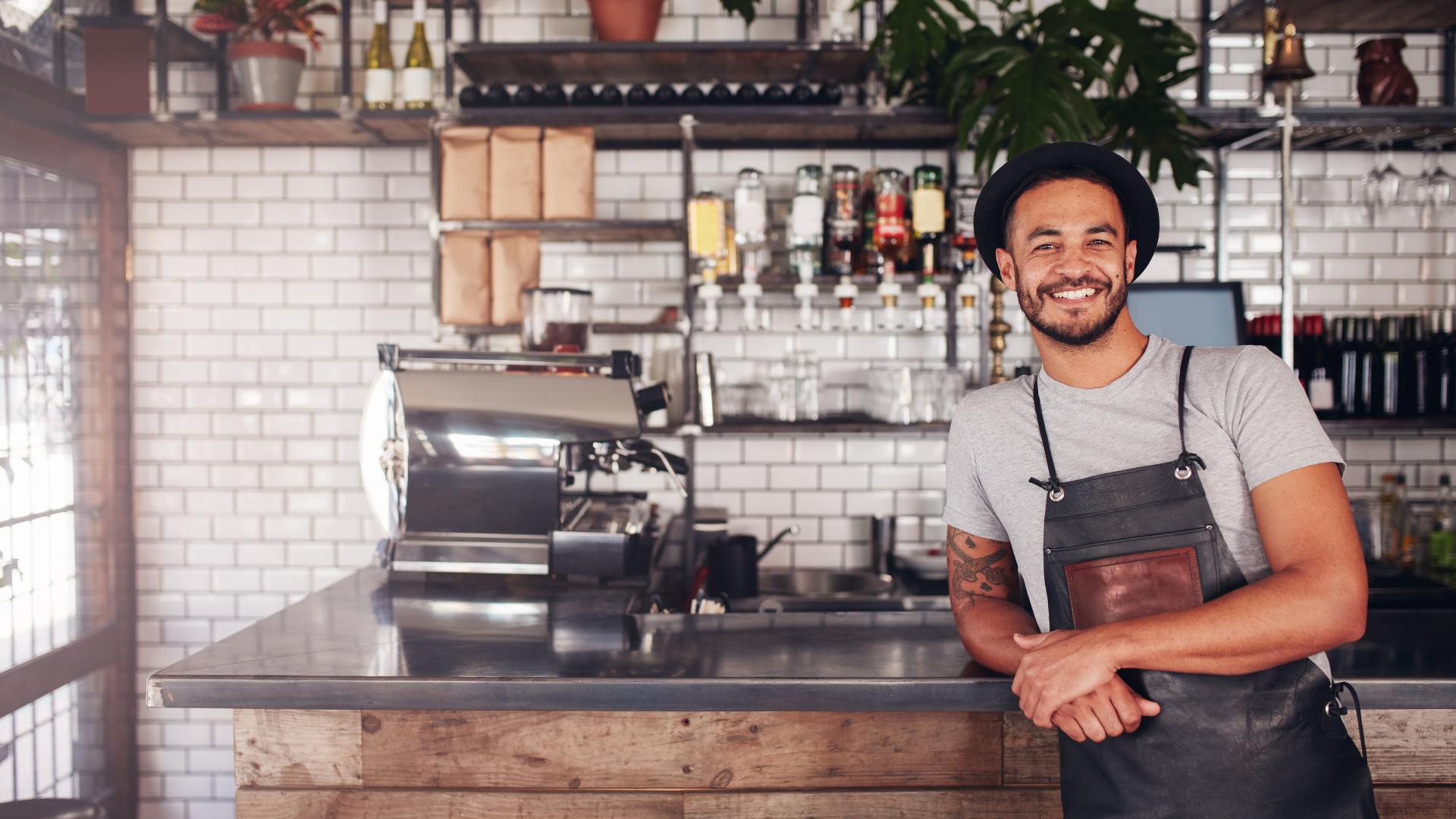
We cannot emphasize this enough – a coffee expert advisor is vital for the success of any coffee-based business. Why? Mostly because an expert would be able to advise you on many things such as
- The best type or the different types of coffee you can use for each preparation.
- The most efficient way of preparing coffee to achieve high-quality cups every time.
- Proper storing and handling techniques for grains.
- And the equipment you’ll need to run a successful coffee shop.
A coffee expert or a seasoned barista would play the role of an executive chef in your coffee shop. Having this type of knowledge is not very common unless you’re a connoisseur of coffee, which is why delegating these functions will be faster in most cases. Additionally, a seasoned barista can help you work out things like the layout of the working area, machine cleaning processes, and even positions you need to fill to run a good coffee shop.
4. Find a Supplier of High-Quality Coffee Beans

Once you’ve decided on the type of coffee drinks you will serve in your shop, you must find the best coffee bean supplier. You’ll probably have several options, but sticking to what makes the most sense considering your concept and menu is a good rule of thumb. For example, you can’t get the most expensive coffee bean suppliers for a mom-and-pop coffee shop, because it wouldn’t make a lot of sense. Instead, it would make sense to stick to a supplier that sells the best coffee within a reasonable price range. That way you can also maximize your profits while delivering the best cup of coffee your customers can afford. On the other hand, you shouldn’t just use the cheapest coffee you can find or pre-ground coffee – coffee beans will deliver the best flavors and fragrances always.
5. Find a Venue That Suits Your Needs
Now comes the time when you must find a venue that suits three basic needs:
- A price within your budget.
- Enough space to tend to customers, sitting areas, bathrooms, or even a drive-thru if that’s part of your concept.
- And enough working space for equipment and employees to prepare orders.
The good thing about coffee shops is that they’re usually smaller when compared to other food businesses that require more space, like bakeries and restaurants. You must also consider the permits you’ll need to get to establish your business in the area and if it’s even possible to do it. It’s also vital that your customer base passes organically through the area – the closer you are to your customers, the better. Location plays a crucial role in food businesses because it either makes establishments convenient or inconvenient for customers. That’s why looking for the right location can take months, so you should have at least a couple of locations in mind before getting started with the planning.
6. Start Buying the Equipment and Miscellaneous
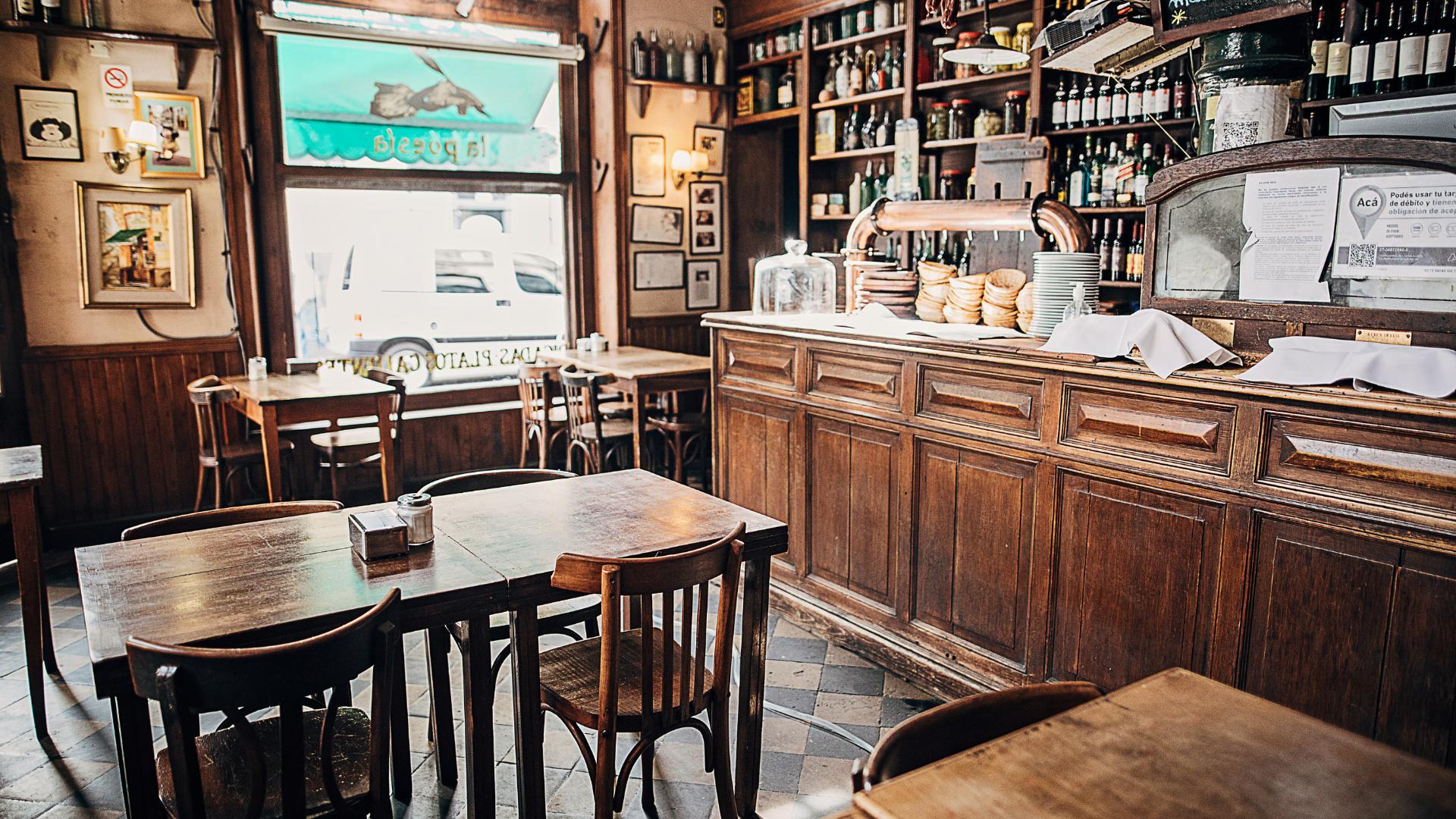
At this point, you’ve already secured a location to open your coffee shop. Now it’s time to start everything that makes your business tick. The equipment you will need depends directly on the menu you’ve created and the concept of the coffee shop. Usually, coffee shops have simple food offers like common local breakfasts, donuts, sandwiches, simple desserts, and more. Still, you probably won’t need to buy a lot of cooking equipment. In most cases, a small grill and griddle combo and a small oven will suffice – of course, that depends on your concept and the size of your business. What you’ll probably have to focus more on are coffee machines, which can set you back at a couple of thousand dollars. It’s worth spending reasonable amounts of money on espresso machines because it affects their quality and durability. Usually, the cheaper the machine, the less durable it is! These are the main factors that will determine what will be the best purchase for your particular coffee shop. Most espresso machine brands offer different sizes and options to suit your needs, so make sure to consider things like preparation speed, the number of nozzles, and extra features that ease the work of your baristas. Also depending on what you offer, you’ll have to equip your kitchen with other tools like coffee bean grinders, food warmer displays, commercial-grade blending machines, and more.
Also, you’ll need to start looking for a POS system like Waiterio to help you keep your business organized. Waiterio is a hassle-free and efficient POS system that can help you get started in a few minutes. You can:
- Add your menu to the app to create digital menus for your customers to order
- Create a simple SEO-optimized website that shows your menu and location
- Obtain detailed reports about your sales
- Manage employees easily
- And much more
Waiterio doesn’t require you to spend a lot of time and money on equipment, training, or setup. Check out the app here to learn more!
7. Start Hiring and Training Your Staff
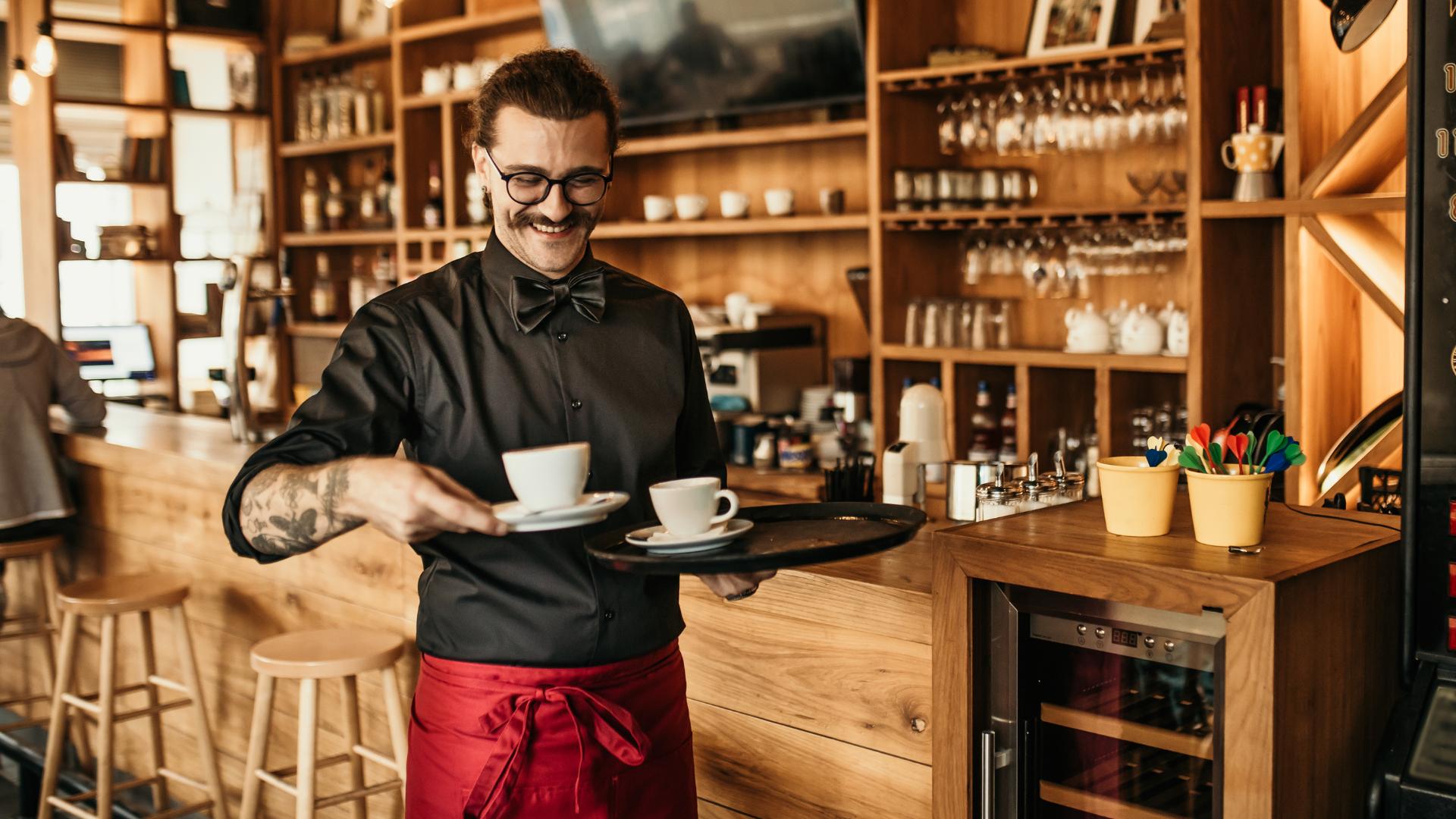
Here at Waiterio, we’ve talked extensively about hiring and training staff for a restaurant – you can check out our articles on the topics here. Hiring and training staff or a coffee shop is very similar. Still, there are some key differences, the main one being the importance of experience. It’s usually the case that you’ll hire staff that has a little bit more experience of both working directly with clients and working preparing the coffee. Both knowledge types are vital and you can’t have employees that excel only at one of these areas. To run a successful coffee shop, you need to hire people who meet the following qualifications:
- They know about preparing coffee in espresso machines. At the very least, you need to hire a person who is highly qualified to help you create training for new employees.
- They have experience working directly with customers and customer service.
- They are polite and follow your business’ guidelines.
Even though you can hire people with these qualifications from the get-go, it’s a good idea to invest time in creating training guides and developing standardized processes and practices. This will help you maintain a quality standard that’s viable for your business to attract and retain customers, while also maintaining the quality of every cup of coffee served. Finally, you must create and maintain safety standards for your employees, especially if you’re using commercial-grade espresso machines, which are a safety and burn hazard.
8. Start Marketing Your Coffee Shop
Marketing is vital for food businesses like restaurants and coffee shops, which is why throughout all the previous steps, you should be creating and applying marketing strategies. You can start marketing a business even before opening its doors, which is an amazing idea if you want to gain traction quickly. You can use numerous marketing tactics and methods, but emphasizing social media awareness and virality marketing is a common practice. You must create and target content directly at your customer base in your city and start gaining followers on Facebook, Instagram, and TikTok. You can also create a Google My Business account, or a website, use SEO, and much more. Check out the following articles for more useful marketing tips:
- Marketing for a new restaurant
- How to do restaurant marketing
- Revolutionary marketing strategies for a bar
- Marketing for food trucks
Note: Even though these strategies are directed at different types of businesses, they work like a charm for coffee shops too!
9. Open Your Coffee Shop and Start Operating!

Now it’s time to open your business. By this time, you must have a marketing strategy already running, so you can open your coffee shop with expecting customers at your doors. With a concept that resonates with customers in your area, and if you communicated the idea behind your business before opening, having a successful opening is almost a given. That’s why you must meet all the requirements mentioned above so you can have a successful opening day. Check out our article on how to host a grand opening for a restaurant – the same ideas apply to smaller businesses like coffee shops.
Coffee Shops Are Underestimated Businesses
Even though coffee shops are a haven for many customers, they’re often underestimated by entrepreneurs who decide to open more complex businesses. Still, there’s something about coffee shops that makes them the perfect business for new entrepreneurs and low-budget ventures. Plus, there’s always the possibility to turn a coffee shop into a bigger business, which makes them very versatile if you plan to keep investing in them. Does a coffee shop sound like a good business to you? It sure is for us!
